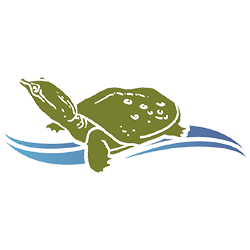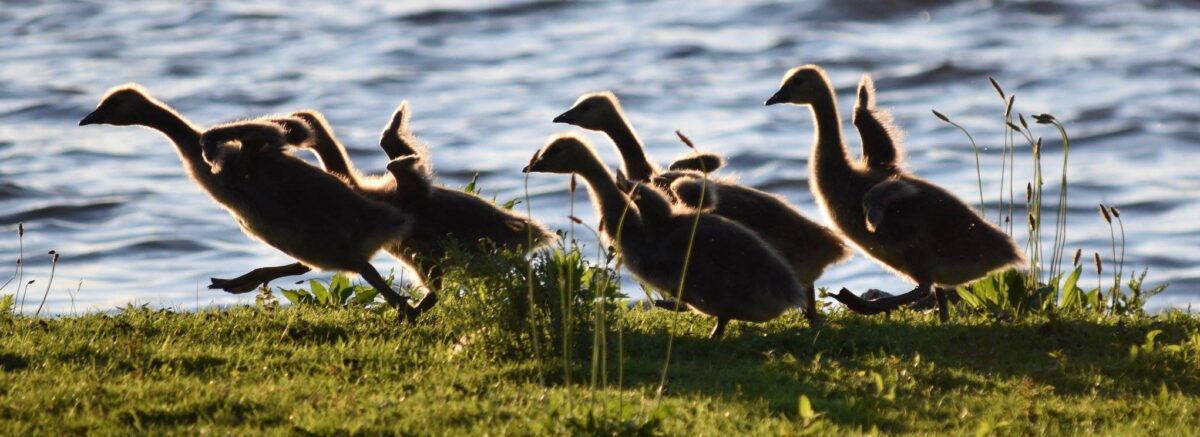by Becky Nystrom
Where land meets lake and green things grow, life abounds. Wild and wet natural shorelines of the Chautauqua-Conewango watershed are home to thousands of species and the gifts of nature…and invite your gentle presence. Overhanging branches of old black willows, maples, viburnums, and dogwoods offer shelter, shade, and fish-spawning habitat at the water’s edge, and roots of cattails, sedges, and rushes hold sediments in place, reduce erosion, and buffer the shore. Kingfishers perch, watch, and plunge there. Sparrows and swallows, wood ducks and warblers court and nest and raise their young there, and blue heron stalk fish and frogs there, along the water’s edge. Just offshore, fragrant white waterlilies and yellow waterlilies create floating gardens, some hundreds of years old, where sturdy stems and foliage provide refuge for insects, snails, frogs, and fish, seeds are relished by mallards and pintails, and rhizomes grazed by beaver, deer and muskrat. Mallards, swans, geese, and ducks dabble and dive there, among the green and growing things. Damselflies and dragonflies, salamanders and snapping turtles, buttonbush and bulrushes, wetland wildflowers, waterfowl, and weathered old trees…all are woven together along the shore in an amazing web of interdependency, complexity, and connection.
Deeper within and swaying to an ancient watery rhythm, submersed flowering plants (aka “weeds” or macrophytes) such as coontail, pondweed, elodea, milfoil, and wild celery create the complex underwater forest often found entangling one’s boat propeller or paddle, but which provide essential resting, nesting, nursery, hiding, and hunting grounds for creatures of the water. Rooted plants also improve water quality by releasing oxygen for underwater life, stabilizing sediments, reducing turbid resuspension of bottom silt, and helping compartmentalize nitrogen, phosphorus, and other nutrients that might otherwise fuel nuisance algal blooms. Microscopic protozoans adhere to leafy surfaces and are grazed by snails, worms, midges, and beetles. Larvae of moths, caddisfly, and weevils cling to swaying stems and feed upon tender buds and feathery foliage, essentially serving as natural macrophyte bio-controls. Nymphs of mayflies, damselflies, and dragonflies crawl among the leaf blades feasting on tinier insects, including mosquito larvae. They, in turn, become the primary food source for larger creatures. Walleyes and smallmouth bass, for example, forage heavily on mayfly nymphs. These “underwater gardens” of our local lakes have been identified by the NYSDEC and local fishermen as critical spawning and nursery habitat for bass, muskellunge, bluegill, sunfish, and other native fish, whose reproduction is most successful in natural vegetation found along undeveloped and undisturbed shorelines. Likewise, waterfowl and shorebirds rely heavily on the insects and other food sources found among lake and river plants. Ducklings consume a diet rich in invertebrates when young, and shift to tubers, seeds, and shoots as they mature.
The photic zone, where light penetrates the water column, is home not only to large obvious plants, but also to the innumerable tiny green dancers, floaters, and clingers known as phytoplankton, or “algae.” Algae may be single-celled, colonial, or multicellular, in long filaments, rolling spheres, or other forms, and of various hues of golden-yellow, green, blue-green, brown, and even red, but typically must be viewed with a microscope to appreciate their true beauty and diversity of form and function. From a botanical perspective, “blue-green algae” aren’t algae at all, but rather a form of aquatic bacteria known as “cyanobacteria.” Nevertheless, algae and cyanobacteria are normal residents of lakes, ponds, rivers, and raindrops, and serve as significant photosynthesizers, oxygenators, and food-producers of open waters. Due to their sheer numbers, incredible diversity, and widespread distribution, diatoms, with exquisitely etched crystalline shells of glass, are the most important algal producers of all. Other freshwater algae include tiny bisymmetrical green desmids, filamentous Spirogyra, and rolling Volvox balls, all of which thrive in early spring. Warm, nutrient-filled late summer waters bring abundant (and sometimes over-abundant!) cyanobacteria, often in the form of tiny colonial seed-like spheres of bluish-green Gloeotrichia and Nostoc, miniature masses of Microcystis, beaded strings of Anabaena, and the slowly undulating filaments of Oscillatoria.
Countless creatures, both seen and unseen, depend for their survival upon the “green things” of swamps and shorelands, woodlands and wetlands, among the water and the waves, and along the river’s edge. There is beauty here, and vibrant life here, and renewal and wonderment, if we but look. There is so much to learn here about the life in our lakes, rivers, and wetlands, but so much to lose here, if we choose not to guard the gifts of the green things and the watery worlds in which they thrive.

